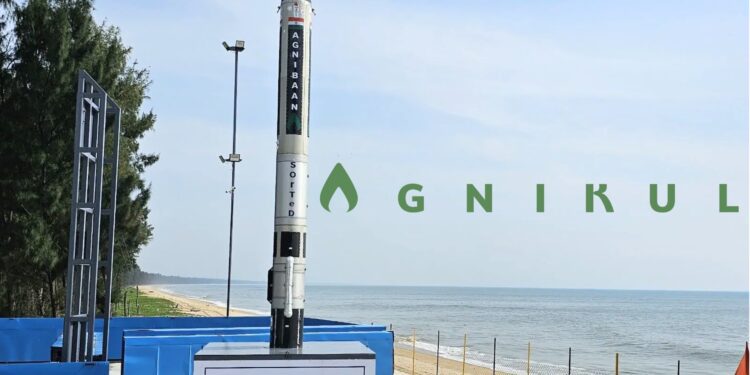Chennai-based space start-up Agnikul Cosmos faced a moment of pause as the countdown for the maiden launch of the Agnibaan rocket was halted at T minus 92 seconds. This marked the third attempt to launch the Agnibaan Sub-Orbital Technology Demonstrator (SOrTeD), a testament to both the ambitions and the arduous journey of private space exploration in India.
The Agnibaan rocket, distinguished by its 3D-printed semi-cryogenic engine, represents not just a technological marvel but also a beacon of India’s advancing capabilities in the space arena. However, technical difficulties led to the postponement of what was to be a landmark event in the annals of Indian space exploration, setting a palpable tension between the aspirations of Agnikul Cosmos and the stringent demands of rocket science.
The Journey to Launch
Since its inception, Agnikul Cosmos has been at the forefront of India’s private space exploration endeavors. Nestled within the incubation arms of IIT Chennai, this audacious start-up embarked on a mission to democratize space access, a vision encapsulated in the Agnibaan rocket. With a payload capacity of up to 300 kg and designed to reach an orbit of about 700 km, Agnibaan is poised to be a game-changer in the deployment of satellites and scientific payloads.
However, the road to the stars is fraught with challenges. The first scheduled test flight on March 22 encountered setbacks, leading to subsequent attempts that also struggled to reach fruition. Despite these hurdles, the resolve of Agnikul Cosmos remains unshaken, a sentiment echoed by the space community that closely watches India’s burgeoning role on the global stage.
The Technical Marvel of Agnibaan
At the heart of the Agnibaan rocket is its semi-cryogenic engine, a pioneering technology that melds liquid and gas propellants in a dance of physics and chemistry. This engine, known as Agnilet, stands as the world’s first single-piece 3D-printed semi-cryogenic rocket engine, a marvel of engineering that showcases the innovative spirit driving Agnikul Cosmos.
Moreover, the rocket boasts the first-ever Ethernet-based avionics architecture and autopilot software developed entirely within India, marking significant strides in indigenous technology development. Powered by sub-cooled Liquid Oxygen (LOX) and Aviation Turbine Fuel (ATF), and guided by carbon composite fins for passive control, Agnibaan embodies the cutting edge of rocket science.
The Implications for India and Beyond
The endeavors of Agnikul Cosmos resonate far beyond the confines of its Chennai headquarters, heralding a new era in India’s space exploration journey. Following the footsteps of Skyroot Aerospace, which conducted India’s first private rocket launch in November 2022, Agnikul aims to fortify India’s position in the competitive space sector.
This mission, and the technology it seeks to validate, are not just milestones for Agnikul Cosmos but also for the Indian Space Research Organisation (ISRO) and the nation’s space ambitions at large. Demonstrating semi-cryogenic engine technology would vault India into a select group of space-faring nations, expanding its capabilities in launching satellites and exploring space.
Looking to the Horizon
As Agnikul Cosmos regroups for another launch attempt, the spirit of innovation and perseverance remains undimmed. The setbacks faced are not seen as failures but as stepping stones, each providing valuable data and insights that edge the team closer to their ultimate goal. In the grand tapestry of space exploration, each attempt, successful or otherwise, enriches the collective knowledge and experience of humanity’s quest to explore the cosmos.
The journey of Agnikul Cosmos is emblematic of the broader narrative of space exploration—a realm where the audacity of hope meets the rigor of science. As India continues to assert its presence in space, initiatives like Agnikul Cosmos not only advance technological frontiers but also inspire a new generation to look upwards, dreaming of the stars.
In the silence that follows a postponed launch, there is reflection, learning, and the rekindling of resolve. For Agnikul Cosmos and for India, the voyage to the stars is just beginning, filled with the promise of discovery, innovation, and the timeless allure of the unknown. The journey of the Agnibaan rocket, with its aspirations and setbacks, serves as a poignant reminder of humanity’s boundless quest to explore, understand, and ultimately transcend our earthly confines.























